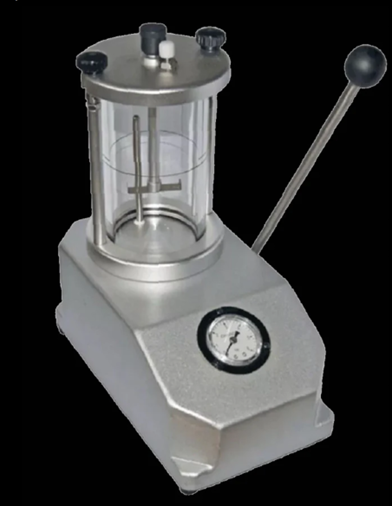How Are Depth Ratings Measured for Watches?
- bkingcove

- Jul 15
- 2 min read
When it comes to dive watches, ensuring water resistance is critical. There are three primary methods watch companies use to measure the depth rating of their timepieces:
Dry Testing (Air Pressure Method)
Wet Testing (Water Pressure Method)
ISO 6425 Standard for Dive Watches
In this article, I’ll focus on Wet Testing, which is the method I personally use to determine whether a watch is dive-ready or likely to flood. But before we get into testing, let’s review the most common causes of water intrusion.
Common Points of Failure
The Crown
The crown is used to wind the watch and set the time or date. Some watches have crowns that don’t screw down, but dive watches typically feature a screw-down crown that locks into place to help seal the case. These crowns include O-rings that act as a barrier against water. One of the most common causes of flooding is either a loose crown that wasn’t screwed down all the way, or a damaged or dry O-ring.
The Case Back
Like the crown, the case back also relies on an O-ring to form a water-tight seal when it’s screwed in. Problems here typically include worn-out O-rings, cross-threading, or simply not tightening the case back properly, all of which can allow water in.
My Wet Testing Process
To ensure every watch I test is water tight, I use a pressure testing device that simulates the conditions of a dive. This tool helps confirm that the watch can withstand real-world depths without flooding.
Here’s how it works:
Pressure Ratings: A Quick Primer
1 Bar ≈ 10 meters or 32.8 feet
1 ATM ≈ 33 feet
My pressure tester goes up to 6 Bars, or 197 feet (65 meters)
For context, the maximum recommended depth for recreational scuba diving is about 130 feet
Wet Testing: A Two-Step Process
Dry Test (Air Pressure Only)
The watch is first placed in the dry chamber of the testing cylinder. The chamber is pressurized with air to simulate the pressure at depth. If the watch case has a leak, air will be forced inside. When the pressure is released, that trapped air can push the crystal out—an early warning of a failed seal. This step tests the integrity of the case without exposing the watch to water.
Wet Test (Submersion Under Pressure)
Next, the watch is submerged in water within the pressure chamber. The chamber is sealed, and air is pumped in to simulate depth. If air has entered the case during the dry test, it will now leak out as bubbles when submerged—indicating a breach.
Important Note:Bubbles coming from the bezel are not necessarily a problem. Bezels are often snap-fit and can trap air between the bezel and the case. This does not mean the watch is leaking; the internal case may still be perfectly sealed.
Final Thoughts
While simulated pressure testing gives us a solid depth rating, I don’t just rely on the lab—I dive with the watches myself. As a dive instructor, I trust these watches underwater and will be posting photos from real dives soon.
Pro Tip: After diving in saltwater, always rinse your watch with fresh water—just like you would your other dive gear. It helps preserve the seals and finish of the watch overtime.










Comments